Taking an environmentally sensitive approach to pest management
Weeping Trees add Charm to Landscapes
Published:
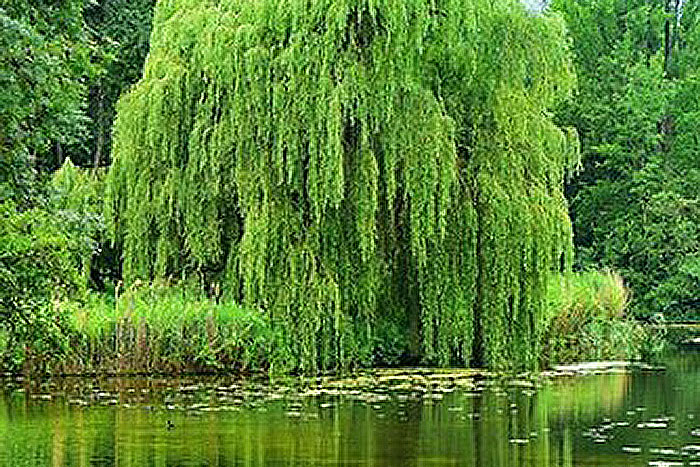
Weeping Willow
There is something charming about weeping trees. Perhaps it's their graceful, arching branches that impart a soothing sense of calm and peacefulness, as they sway in even the slightest of breezes. Or, perhaps it is because they look quite different from other trees in the landscape. Whatever the reason, weeping trees remain popular with gardeners today, as evidenced by the increasing numbers of cultivars available.
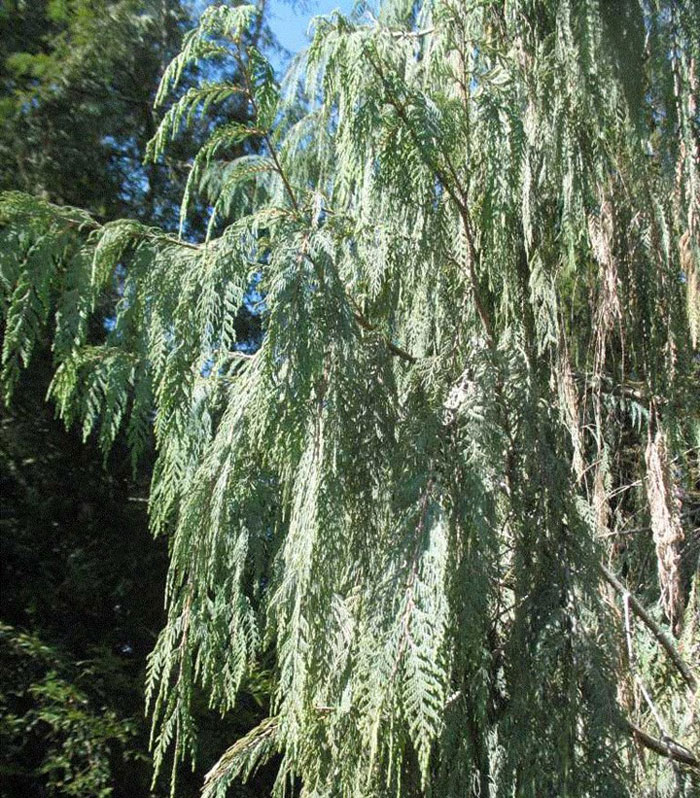
Weeping Cypress (credit: Missouri Botanical Garden)
Weeping trees derive their name from their soft, limp twigs that appear to "weep." This morphological manifestation often leads to a bent crown and pendulous branches that can spill to the ground. While there are some weeping trees in nature, most of those used in landscaping today are mutations that do not "come true" from seeds and must be maintained vegetatively. Currently, about 500 cultivars in 75 different genera exist, although only a small percentage of this number is used for landscaping.
Perhaps the most famous of all weeping trees is the weeping willow (Salix babylonica var. pekinensis). In many ways, it is considered the most graceful of all weeping trees. Its limitations, however, are its need for copious amounts of moisture and its weak wood, which makes it prone to storm damage. The lifespan of a typical weeping willow is fairly short, when compared to other trees that grow to a large size.
Nonetheless, at their prime, weeping willows are exceptionally beautiful and serene, especially when reflected in a quiet pond or stream. The most graceful of the weeping willows is the Babylon weeping willow (Salix babylonica var. pekinensis 'Pendula'). Unfortunately, it is less hardy than the frequently planted Wisconsin weeping willow (Salix x pendulina) that bears pendulous but not truly weeping branches. For those wanting a bit more color, Salix alba 'Tristis' is sold commercially as golden weeping willow. The latter derives it name from its yellow twigs and attractive weeping form.
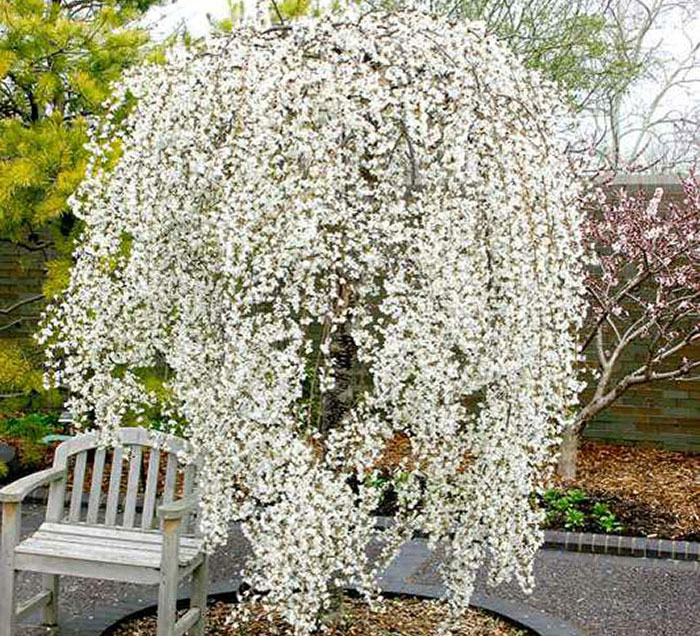
Weeping Cherry 'Snow Fountain" (credit: Missouri Botanical Garden)
Arguably, the second most popular weeping tree is weeping Higan cherry (Prunus x subhirtella 'Pendula'). Native to Japan, it can reach a mature height of up to 40 feet, although dwarf cultivars exist (e.g., 'Snow Fountain'). At times, cultivars of weeping Higan cherry are grafted onto an understock about six feet tall to produce a rather interesting profile of pendulous branches emanating from a short trunk. If available, cultivars that bear double flowers produce color longer than the single-flowered types.
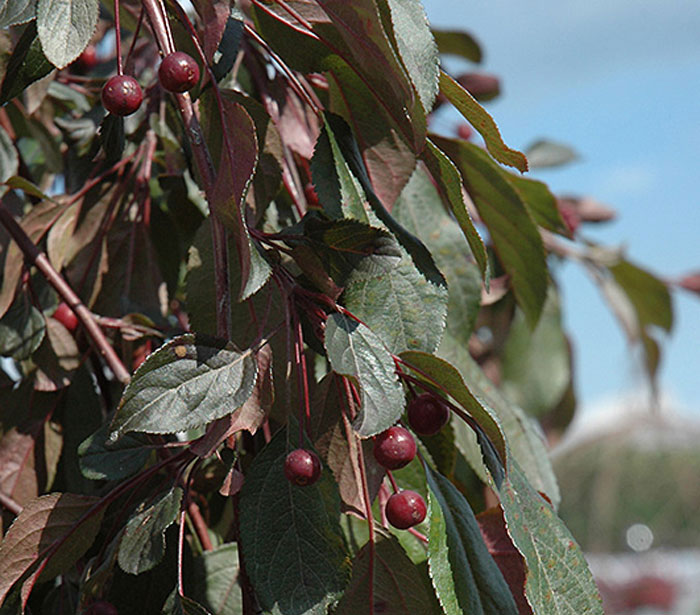
Crabapple 'Weeping Ruby Tears' (credit: NetPS Plant Finder)
Although there are many cultivars of flowering crabapples, one of the best with a weeping form is 'Red Jade' (Malus x scheideckeri 'Red Jade'). It bears flowers that start as dark pink buds that open to single white flowers. Fruits are small, red and make an excellent early winter display in the landscape until birds eat them. 'Louisa' is another popular cultivar weeping crabapple that bears pink flowers that produce, because of its cascading branches, a pink waterfall appearance when in full bloom. Finally, 'Weeping Ruby Tears'™ is a weeping flowering crab much like 'Louisa,' but with burgundy-green foliage for added color appeal.
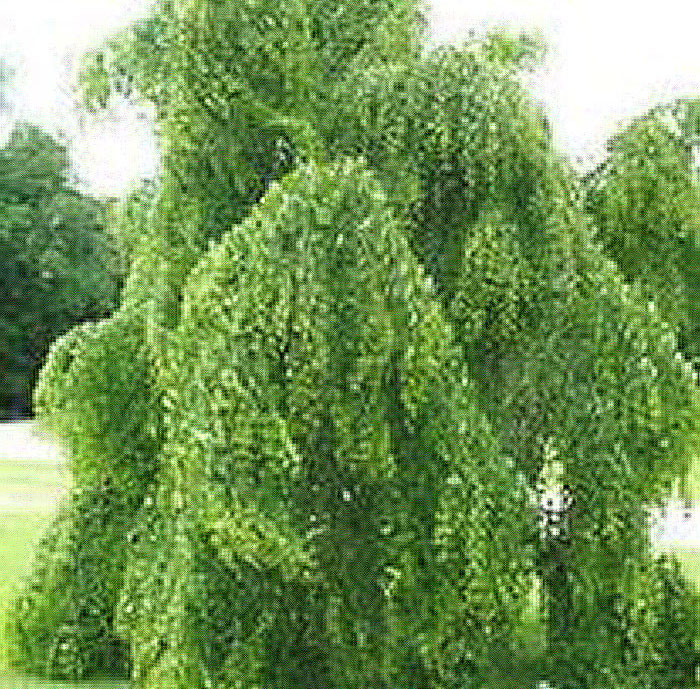
Weeping Katsura Tree (credit: Missouri Botanical Garden)
The interest in weeping trees led to the selection of weeping forms of birch, beech, katsura tree, Japanese pagoda tree and even redbud and dogwood. While weeping forms of these species might not be readily available in commerce (and some are not well-suited for the Midwest) they illustrate the interest gardeners have in finding and preserving weeping forms of trees. From the preceding list, weeping katsura tree (Cercidiphyllum japonicum 'Pendulum') represents a colorful and carefree tree for Midwest landscapes. Its heart-shaped leaves emerge reddish-purple in the spring, only to change to blue-green as they mature. In autumn leaf color changes again, as they turn clear yellow or apricot in color.
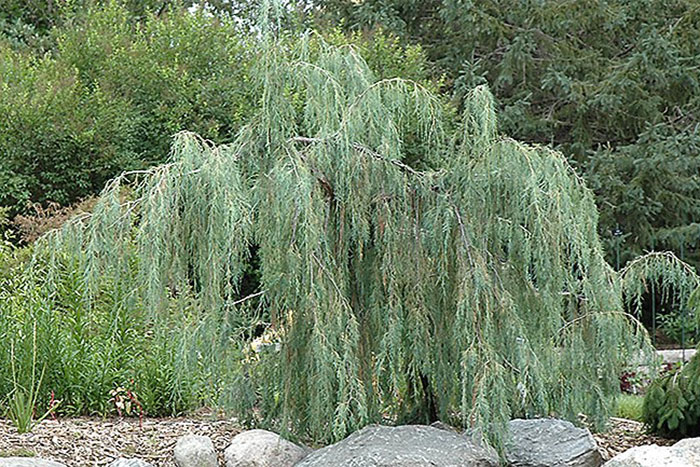
'Tolleson's Weeping Juniper' (credit: NetPS Plant Finder)
Evergreens selected for their weeping form also exist. Most provide a graceful structure in the landscape with four seasons of effect. One of the most elegant is a weeping cultivar of Rocky Mountain juniper called 'Tolleson's Blue Weeping' (Juniperus scopulorum 'Tolleson's Blue Weeping'). Although not a common tree, it may be found with bluish as well as soft green foliage. Its gracefully arching branches and attractive soft-textured foliage make this small tree a favorite landscape specimen to provide accent.
Not all weeping evergreen have the grace of the weeping juniper. But each has its own charm. Weeping white pine takes many years to develop into a beautiful form. When young, they tend to lack symmetry and their branches often droop to the ground, forming a mounded appearance. This also is true of weeping forms of red pine.
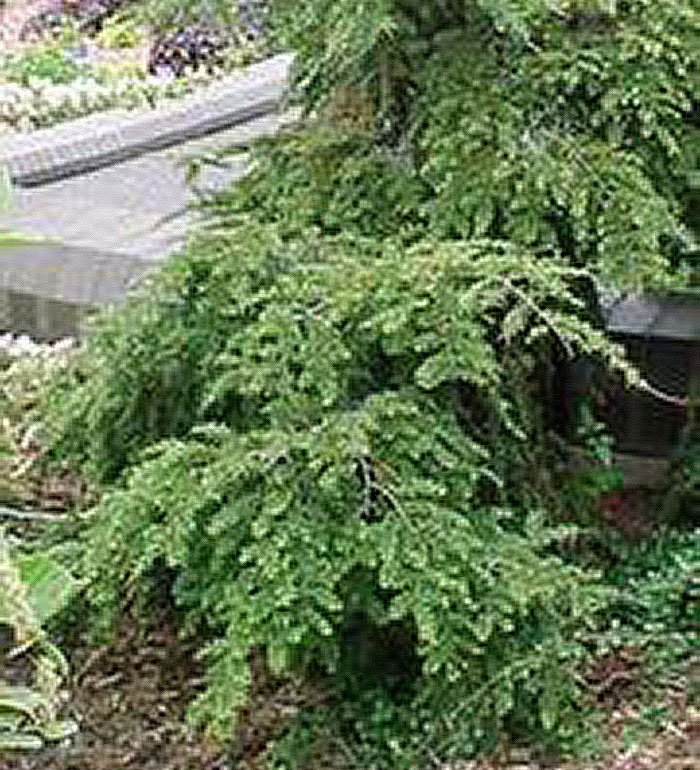
Weeping Hemlock (credit: Missouri Botanical Garden)
Pruning, staking and developing a strong central leader are often necessary to train these trees into a suitable tree form as a young plant. If allowed to grow unmanaged, weeping spruces can develop a horizontal trunk with branches drooping from it. The result, again, is a mound-like appearance. Some weeping forms of trees should not be expected to become true (large) trees. For example, the weeping hemlock develops into a large shrub, which is much broader than it is tall. Still, when properly placed in the landscape, the result can be dramatic.
While most of the aforementioned weeping trees are relatively rare and often fairly expensive, they do allow gardeners who look for the unusual some unique choices for accent plants in the landscape. In addition to making excellent specimen trees, they also combine well in plant grouping with other trees and shrubs.
Subscribe to receive similar articles sent directly to your inbox!
REVISED: August 17, 2021